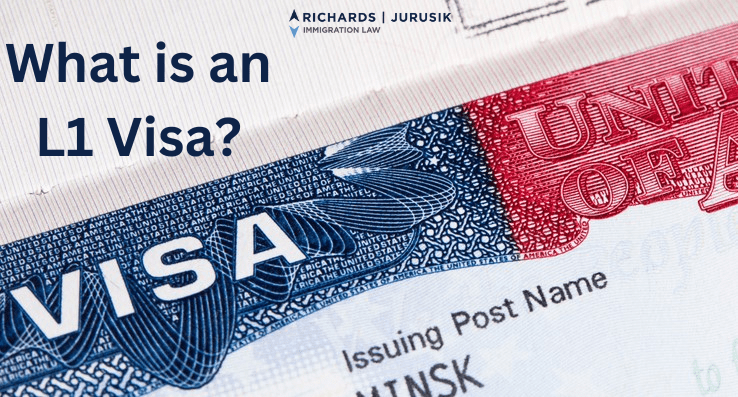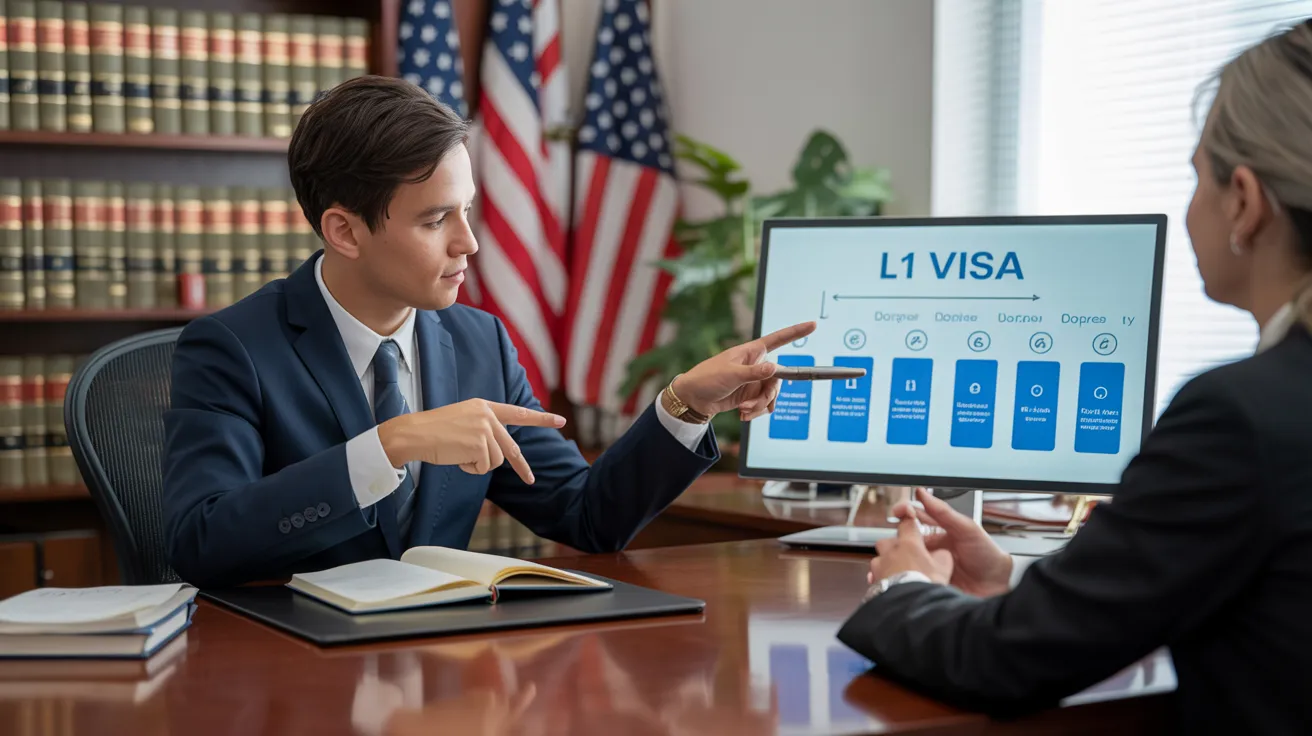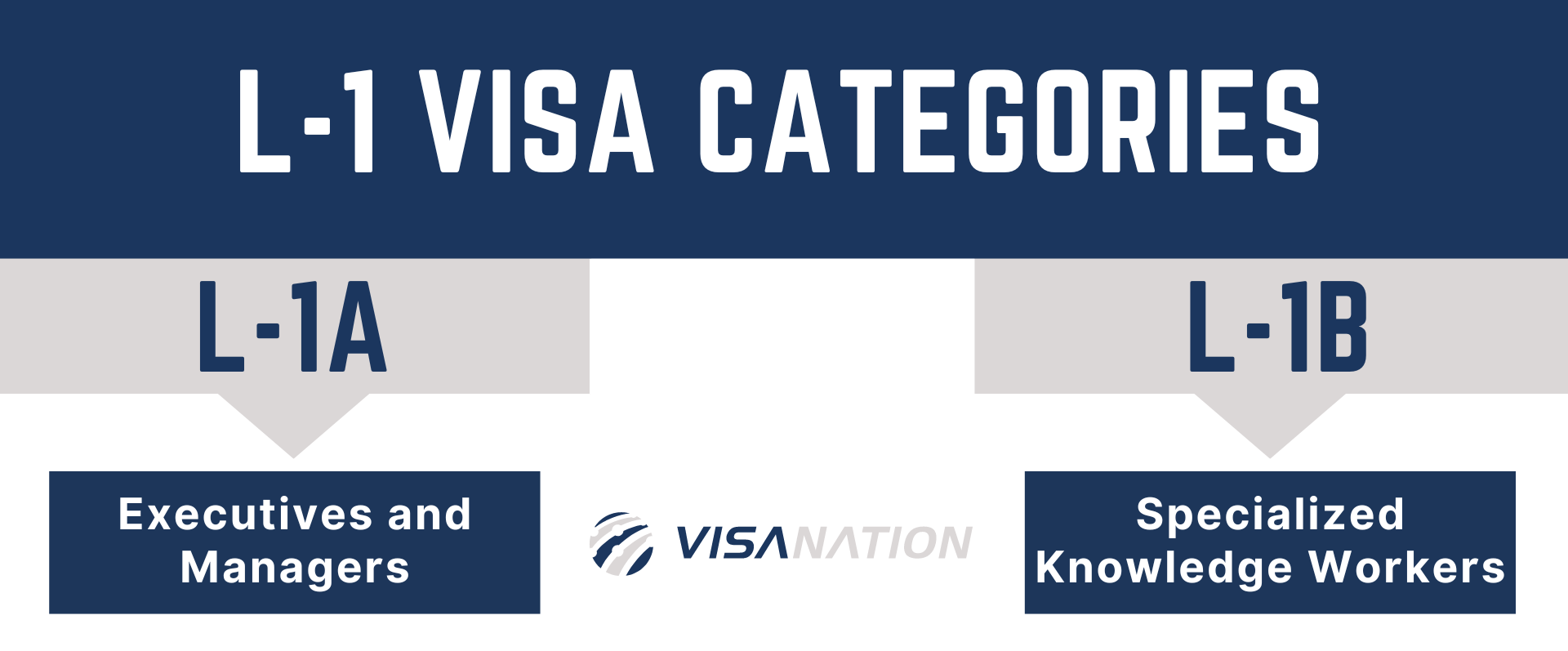Opening Opportunities: A Comprehensive Overview to the L1 Visa Process
The L1 visa process provides an important path for international business seeking to transfer vital workers throughout borders. Understanding the subtleties of eligibility criteria, the distinctions between L-1A and L-1B visas, and the complexities of the application process can greatly influence an applicant's success. Maneuvering this complicated landscape is not without its difficulties, and mindful interest to documentation and company sponsorship is important. As we discover the essential parts of this process, the methods for getting over prospective challenges will become noticeable, disclosing exactly how notified prep work can open up a globe of possibilities.
Comprehending the L1 Visa
Understanding the L1 visa requires identifying its significance as a crucial device for multinational business seeking to move proficient employees in between worldwide offices. This non-immigrant visa classification assists in the activity of executives, supervisors, and specialized knowledge employees to the USA, thereby allowing organizations to preserve functional continuity and harness global talent efficiently. The L1 visa is separated into 2 primary classifications: L-1A for managers and execs, and L-1B for workers having specialized knowledge.The L1 visa offers an essential role in enhancing a firm's affordable side in the worldwide marketplace - L1 Visa. By permitting firms to transfer their key employees, services can guarantee that vital tasks are taken care of by qualified people who are already acquainted with the company's culture and functional processes. This interior transfer mechanism not only cultivates understanding sharing however additionally advertises development and partnership throughout borders.Moreover, the L1 visa is typically preferred for its reasonably uncomplicated application procedure contrasted to various other visa classifications, as it permits twin intent, permitting holders to go after long-term residency while on a short-lived copyright. This feature makes the L1 visa particularly appealing for both companies and workers, as it streamlines the pathway for knowledgeable specialists to establish long-term residency in the USA
Eligibility Standards
Eligibility for the L1 visa rests on a number of essential standards that ensure both the employee and the company fulfill certain credentials. This non-immigrant visa is designed for multinational companies to transfer staff members from consular services to united state counterparts.Firstly, the company must be a certifying company, that includes a moms and dad company, branch, associate, or subsidiary of a united state business. The firm needs to have been doing service for at the very least one year both in the U.S. and abroad. This assures that the firm has sufficient operational stability and a genuine presence.Secondly, the worker must hold a supervisory, executive, or specialized expertise position. For L1A visas, the applicant should demonstrate managerial or executive qualifications, while L1B visas concentrate on specialized understanding pertaining to the company's items, solutions, or processes. In addition, the worker should have worked for the international entity for at the very least one continuous year within the last three years before their application.Lastly, the worker's role in the united state have to align with their previous placement, making sure that their skills and expertise are leveraged for the business's benefit.
Types of L1 Visas
The L1 visa classification makes up 2 key kinds made to promote the transfer of workers within multinational firms: the L1A visa for managers and execs, and the L1B visa for employees with specialized knowledge. Each type offers distinctive objectives and has certain eligibility criteria.The L1A visa is tailored for people who hold supervisory or executive settings within a company. This visa allows top-level workers to transfer to a united state branch, subsidiary, or associate of the same company. Applicants for the L1A visa must demonstrate that they have been employed in a supervisory or executive ability for at the very least one continual year within the past three years before their application. Additionally, this visa supplies a longer period of stay, at first approved for three years, with the possibility of expansions for as much as 7 years.In contrast, the L1B visa is planned for professionals with specialized understanding pertaining to the company's items, services, or procedures. To certify, candidates should prove that their experience is crucial to the company and that they have benefited a minimum of one continuous year within the last three years in a function that needed this specialized knowledge. The L1B visa is originally given for 3 years, with expansions offered for as much as five years.Both visa types are crucial for firms looking for to boost their international operations by leveraging skilled personnel, thereby promoting innovation and performance within the U.S. market.
Application Process
Steering via the L1 copyright procedure includes numerous essential steps that must be meticulously followed to guarantee a successful outcome. The process starts with the U.S. company, who should first establish qualification by showing a qualifying connection with the foreign entity and confirming that the worker satisfies the particular demands for the L1 visa category being sought.Once qualification is confirmed, the company launches the process by submitting Form I-129, the Petition for a Nonimmigrant Worker, with the United State Citizenship and Migration Provider (USCIS) This type must be come with by a detailed summary of the task obligations to be done, the organizational structure of both the united state and foreign entities, and the staff member's credentials. It's vital to verify that all information is exact and complete, as noninclusions or inaccuracies can bring about delays or denials.Upon authorization of the I-129 application, the following action involves the worker looking for the L1 visa at a united state consular office or consular office in their home nation. This stage calls for the completion of Kind DS-160, the Online Nonimmigrant copyright, and arranging an interview. Throughout the meeting, the candidate has to offer proof supporting their credentials and the employer's petition.After the visa is approved, the employee can go into the USA to operate in the designated function. In general, cautious prep work and adherence to every step of the application process are vital for an effective L1 visa outcome.
Needed Documentation

Important Kinds Needed
Steering the L1 Visa procedure requires cautious attention to the crucial kinds and paperwork required for a successful application. The primary kind required is the Type I-129, Request for a Nonimmigrant Worker, which have to be completed and sent by the U.S. company. This form lays out the details of the work offer and the qualifications of the worker seeking the L1 Visa.Alongside Form I-129, the applicant will need to full Form I-539 if accompanying relative are likewise making an application for visas. Additionally, the company must provide evidence of the qualifying connection in between the U.S. entity and the foreign entity, commonly demanding the submission of corporate papers such as write-ups of unification or financial statements.Moreover, it is necessary to include the L Category Supplement to Type I-129, which specifies the kind of L Visa being requested-- either L-1A for supervisors and executives or L-1B for workers with specialized expertise. Applicants need to guarantee that all kinds are signed and dated properly, as incomplete entries can lead to hold-ups or denials. Properly setting up these essential types lays the structure for a smoother L1 copyright procedure.

Sustaining Evidence Needs
Supporting documents is important for a successful L1 copyright, as it substantiates the cases made in the application. Candidates have to give a variety of records to demonstrate eligibility for the visa, which is categorized right into two key kinds: evidence of the qualifying relationship between the united state and international entities and evidence of the candidate's qualifications.To establish the relationship, applicants need to send documents such as corporate organizational graphes, financial statements, and evidence of possession. These files validate that the foreign firm has a certifying partnership with the U.S. employer, whether as a parent company, subsidiary, branch, or affiliate.For the applicant's qualifications, vital documents consist of a detailed employment letter from the foreign company, laying out the candidate's job title, tasks, and duration of employment. Furthermore, educational credentials, such as levels and diplomas, should be offered to confirm the applicant's experience in the relevant field.
Company Sponsorship Records

Usual Obstacles
Steering the L1 visa process provides numerous common difficulties that applicants need to recognize. Key concerns commonly include rigorous paperwork needs, prospective delays in processing times, and the requirement for stringent lawful compliance. Recognizing these barriers can assist candidates better prepare and alleviate risks during their copyright trip.
Paperwork Demands
The L1 copyright process usually provides substantial obstacles associated with documentation demands. Candidates should offer considerable paperwork to establish eligibility, which can result in complication and potential hold-ups. Key files consist of evidence of a qualifying partnership in between the U.S. and foreign employer, proof of the applicant's employment history, and thorough details about the job role in the U.S.One usual challenge is collecting adequate evidence to show the nature of the qualifying connection. Business typically struggle to present clear business graphes or monetary declarations that show the link in between the entities. On top of that, making certain that letters of assistance from employers properly show the candidate's work obligations and certifications is necessary, as unclear descriptions can lead to denials.Another concern occurs from the requirement for comprehensive task summaries that straighten with the L1 visa categories. Candidates should verbalize not only their current role yet additionally their supervisory or specialized expertise responsibilities clearly. This requires a thorough understanding of both the candidate's position and the regulative language used in L1 applications.
Processing Time Hold-ups
Experiencing hold-ups in handling times is a common challenge dealt with by L1 visa applicants, usually causing aggravation and uncertainty. A number of variables add to these delays, including high application volumes, raised examination of applications, and management stockpiles within the united state Citizenship and Immigration Provider (USCIS) Applicants might locate that handling times can differ significantly depending on the solution center handling their application, as each facility has its very own workload and effectiveness degrees. Additionally, the complexity of the candidate's instance, such as the demand for considerable documents or information, can even more extend wait times.In some instances, concerns associated with the applicant's existing immigration status or previous visa history might additionally bring about extra delays, as USCIS may require further review or information. It is essential for candidates to continue to be positive during this duration, keeping open interaction with their employers and lawful agents to resolve any type of prospective issues promptly.Understanding these processing time obstacles can aid L1 visa candidates prepare for feasible hold-ups and minimize the influence on their shift and occupation strategies. Patience and persistance are crucial merits in maneuvering this intricate process.
Lawful Conformity Issues
Lots of L1 visa candidates encounter legal compliance issues that can complicate their trip toward acquiring the visa. Comprehending and adhering to the specific policies set by the U.S. Citizenship and Immigration Solutions (USCIS) is crucial. Common obstacles consist of showing the qualifying connection between the international and united state companies, in addition to verifying that the candidate has the requisite specialized knowledge or supervisory capacity.Additionally, candidates need to give complete documentation detailing their job duties, corporate framework, and economic feasibility of the united state entity. Insufficient or incorrect documents can result in hold-ups and even denials. Companies must additionally ensure that they follow labor regulations, consisting of wage and functioning condition standards, which can impact visa eligibility.Another usual problem includes preserving compliance with the regards to the visa once given. Modifications in employment standing, job obligations, or business framework can require amendments to the visa, which otherwise addressed quickly can bring about legal problems. As an outcome, remaining educated regarding conformity requirements and seeking lawful advice when needed is necessary to browse the complexities of the L1 visa process effectively.
Tips for Success
Success in the L1 copyright procedure commonly pivots on precise preparation and interest to information. To enhance your chances of authorization, begin by extensively understanding the qualification requirements for both the L1A and L1B visa categories. Examine whether your placement at the firm qualifies as supervisory, exec, or specialized understanding, as this categorization notably influences your application.Next, collect comprehensive paperwork that substantiates your insurance claims. This consists of organizational charts, comprehensive job descriptions, and evidence of the company's functional structure. Clear and concise evidence of the certifying partnership between the U.S. entity and the international entity is essential. Confirm that all files are organized realistically and presented in a professional manner, as this mirrors your dedication and seriousness regarding the application.Engage the services of an experienced immigration attorney who concentrates on L1 visas. Their expertise can confirm very useful, leading you via facility regulations and assuring that all paperwork adheres to current laws. Furthermore, prepare for the meeting by exercising answers to common concerns and preparing to review your duty and payments to the business detailed.
Often Asked Inquiries
Can Family Members Members Accompany the L1 Visa Holder?
Yes, member of the family of L1 visa owners, including spouses and unmarried youngsters under 21, can accompany the primary visa holder. They might also look for L2 visas, which enable them to live in the United States.
The Length Of Time Can I Remain On an L1 Visa?
The L1 visa permits initial keeps of approximately three years, with the possibility of expansion. L1A visa owners may remain for an optimum of 7 years, while L1B visa holders can continue to be for 5 years.
Can L1 Visa Owners Request a Permit?
Yes, L1 visa holders can get a permit. L1 Visa. They might go after permanent residency with employment-based categories, generally calling for sponsorship from their employer, given they satisfy the necessary qualifications and paperwork requirements
What Occurs if My L1 copyright Is Denied?
If your L1 copyright is denied, you may receive a notification outlining the factors for denial. You can look for to appeal the choice, reapply, or check L1 Visa out alternative visa choices based upon your scenarios.
Exist Any Traveling Restrictions With an L1 Visa?
An L1 visa generally allows for worldwide traveling; however, re-entry to the U. L1 Visa Requirements.S. rests upon maintaining valid standing. Travelers need to ensure compliance with visa problems to avoid complications upon return
Final thought
